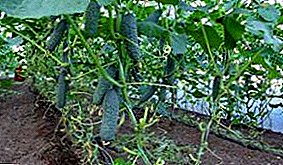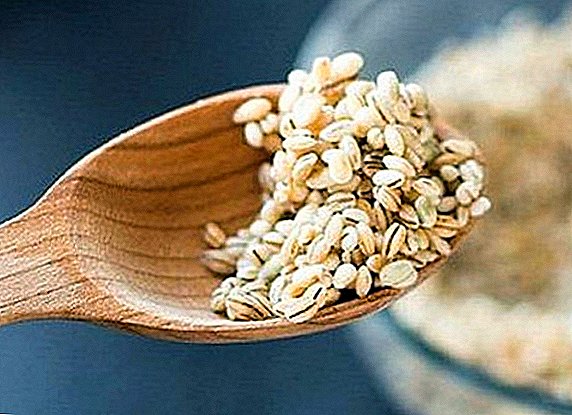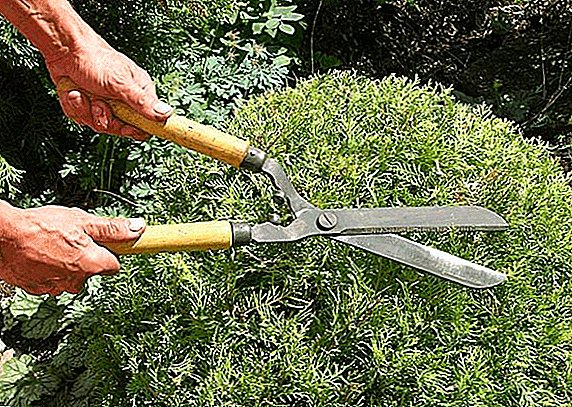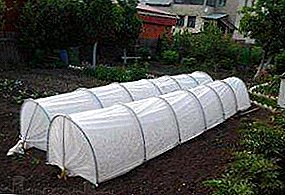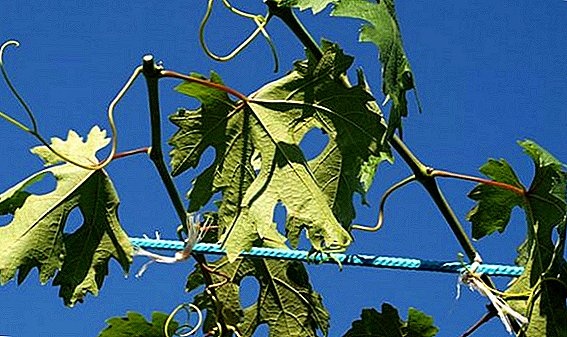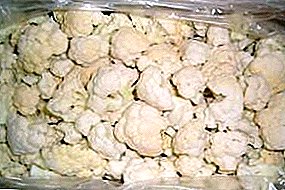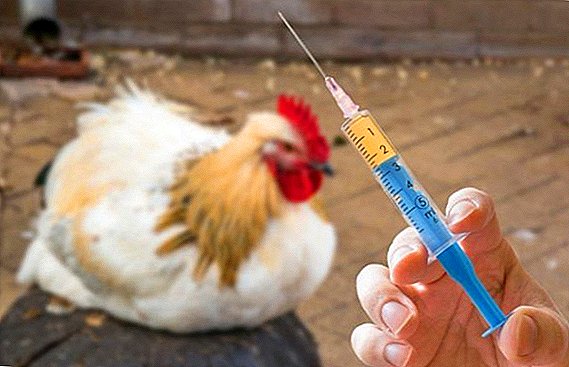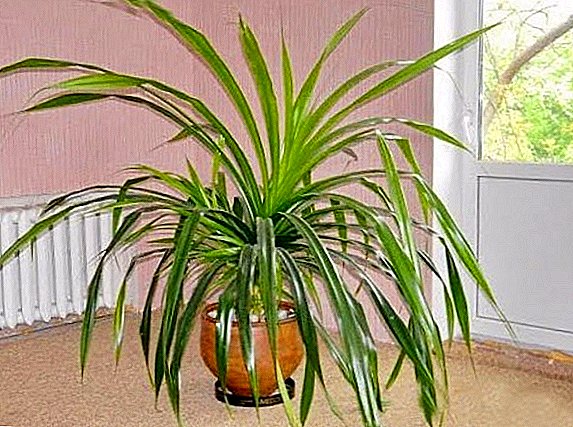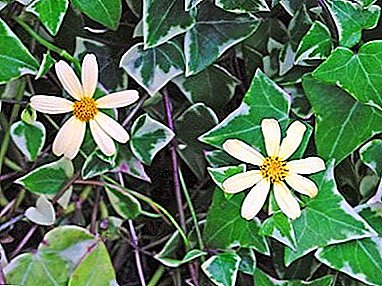
Senecio - The Latin name of a vast and diverse kind of plants to which the gardener belongs - comes from the word "senex", "old man".
This is due to the fact that many species of this group of plants have silvery hairs or “balding” flower baskets after seeds fly over.
Krupnoyazykovy krestovnikHowever, it does without the "gray hair", and without the "baldness".
Krupnoyazykovy krestovnik is a tall evergreen liana with fleshy leaves up to 8 cm long - green or motley, decorated with yellowish-white stripes and spots.
 Leaf shape - triangular or pentagonal, with a protruding central segment, thereby a "tongue" with clear straight sides, from which this type of baptizer received the Latin name "Senecio macroglossus" ("big tongue").
Leaf shape - triangular or pentagonal, with a protruding central segment, thereby a "tongue" with clear straight sides, from which this type of baptizer received the Latin name "Senecio macroglossus" ("big tongue").
In nature, this vine grows in South Africa, including in the arid regions of Natal. From here comes another name for the plant: "Natal ivy".
By the appearance of a large-tongued krestovnikIt is indeed similar to ivy, but it has a distinctive distinction: typical succulent leaves: thick, plump, with a waxy coating.
The fact that "Natal ivy" is a leaf succulent explains the origin of another name by which this vine is often sold: adhesion. This name is given in honor of the German botanist Klein, who studied precisely the succulent forms of the krestovniki.
In addition to attractive leaves with reddish central vein and brownish-purple, purple cuttings, "Natalian ivy" is decorated in winter and early spring with small pale yellow flowerslike daisies.
The juice of the plant is poisonous. If it comes into contact with the skin, it can cause irritation and allergic reactions, and if it enters the body, it can cause poisoning.
Therefore, krupnoyazkovy krestovnik should not be grown where there are pets and small children.
A photo



Home care
Generally godfather big-tongued unpretentious and does not require any features in the care. The main difficulty is the observance of the seasonal temperature and humidity regime: when it is disturbed in winter, this vine has a habit of dropping all the leaves.
Lighting
"Natal ivy" requires bright but diffused light. From an excess of intense light, its leaves turn yellow and curl. Only northern windows are contraindicated to it, and in the south, in sunny summertime, shading is required.
Temperature
Summer temperature Ideally should be a day - no higher than 25 degrees, and at night - from 12 to 16. The winter maintenance of the plant is optimal at 15–18 degrees, with a possible decrease to 12 degrees.
Soil composition
 Soil for the krestnikovshould be ordinary for succulents: slightly acidic, not overly nutritious, loose, airtight and moisture permeable.
Soil for the krestnikovshould be ordinary for succulents: slightly acidic, not overly nutritious, loose, airtight and moisture permeable.
From ready-made soil blends fit those that are designed for cacti and succulents.
The following compositions are recommended for self-production: equal amounts of sod, leaf earth and coarse sand; two parts of sod land with one part of sand or perlite; sod, leaf earth, peat, humus and sand - equally.
Landing
A container for planting "Natal ivy" is better to choose a wide shallow and not too big. It is preferable pots of porous material, providing evaporation of moisture and respiration of the root system - ceramic, without a continuous layer of glaze. There must be a drain hole in the bottom.
From below place a layer of expanded clay or small pebbles - it is necessary to ensure a good outflow of water - and then place an earthen room clothed with plant roots.
Root system - the vulnerability of all succulents and when planting it must be particularly protected. Then they are filled and compacted, without tamping, the planting substrate.
Transfer
 Depending on the growth rate and age, large-tongue seedbook transplanted every 1-3 years (young plants - more often) in springtime, and the pot is chosen only slightly larger than the previous one.
Depending on the growth rate and age, large-tongue seedbook transplanted every 1-3 years (young plants - more often) in springtime, and the pot is chosen only slightly larger than the previous one.
After buying give "Natalian ivy" time to acclimatize to new conditions for him for at least two weeks.
During this period, it is better to keep the plant in quarantine, away from the copies already available in your home: problems such as diseases and pests can come to light from your new home.
Then, if the plant has "come" to you in a tight transport pot, you should transplant it, observing the necessary conditions: an appropriate container with a hole in the bottom, a mandatory drainage layer, suitable soil mixture.
When transplanting, you need to check the status of the root system of the acquired radix.
If there are damaged areas, they are removed, the injured places are sprinkled with pounded charcoal. With the defeat of the root mealybug, you will have to wash the roots, plant the plant, and then treat the soil in the pot with an insecticide for the soil.
Air humidity
Unlike many kinds of god baptists, big tongue prefers moisturizing - frequent spraying in the summer, and in the winter - more rare, but only if the plant is contained in a warm room. Periodic washing in the shower will also benefit this vine.
Growth and pruning
The growth rate of the large-tongued krestovnik reaches 20-30 cm per year, and potentially it can grow up to 3 m in length. Such a plant in the home maintenance requires support and pruning.
 Prune this liana in springto form a thick bush, remove loose winter shoots and rejuvenate the plant.
Prune this liana in springto form a thick bush, remove loose winter shoots and rejuvenate the plant.
This type of gadfly quickly resets the lower leaves on old shoots, they are laid bare to the detriment of the overall decoration.
Therefore, perennial "Natalian ivy" is often grown for 2-3 years, and then replaced with young specimens grown from cuttings.
Watering
In winter, "Natal ivy" is watered occasionally, focusing on the fact that to prevent the wilting of the leaves. In the spring, with the beginning of the growing season, water is still dosed, but more often, and in the summer - up to two times a week. When irrigating, the surface layer of the earth must dry out.
Top dressing
Starting from March to August, inclusive, twice a week, liana fed with a specialized mixture for indoor plants with decorative leaves. In the autumn-winter period do not conduct dressing.
Bloom
This creeper, unlike real ivy, blooms light yellow "daisies". If on your godparent their thin petals are revealed - this is an indicator of the full care of the plant. At home, the flowering season is in the middle of winter - the beginning of spring.
Breeding
Krupnoyazchkovy krestovnik easily propagated by cuttings and air layeringmore difficult - seeds.
Breeding methods:
 Reproduction by cuttings.
Reproduction by cuttings.
Cuttings 4-5 cm long are cut in spring or summer, and the sections are located right under the knot.Planting material is dried, the two lower leaves are removed, and then germinated in a light peat-sand mixture, slightly moistening it.
As a rule, the roots are formed in a week, and then the cuttings are planted in several pieces in a pot with drainage and the corresponding soil.
- This liana can be propagated and leaf cuttingswhich are also slightly dried, and then sent to a vessel with water for pre-rooting.
After the formation of the roots, the leaf stalk is grown in a light mixture with a predominance of sand, and then planted in a pot with “adult” soil.
- Reproduction by layering.
Krupnoyazykovyy krestovnik willingly propagated by layering. This ability of his can be used to close the lower "voids" in the foliage of a mature plant: in the same pot one of the branches bends down to the soil and is fixed.Soon it takes root and gives new shoots. Such cuttings can be sent to other pots. After rooting, they are separated from the parent liana.
- Seed propagation.
This breeding method is much more complicated and time consuming. In addition, the seeds must be fresh - otherwise their germination is sharply reduced.Sowing is carried out in March, on the surface of the wet peat-sand mixture. Cover with plastic film, regularly air the resulting greenhouse, monitor the moderate humidity of the substrate.
Seeds, if they have not lost their germination, germinate in 7-10 days. With the advent of two true leaves, seedlings can be seated.
Diseases and pests
Diseases caused by improper care for the godson:
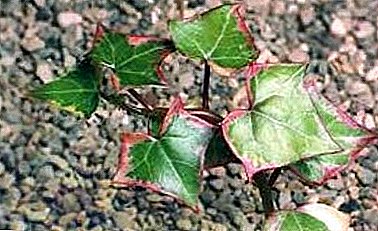 Shrinking and dying of leavesThe appearance of browning areas on them is an indication that the plant is kept in a too warm room, with irregular poor irrigation and insufficient air humidity.
Shrinking and dying of leavesThe appearance of browning areas on them is an indication that the plant is kept in a too warm room, with irregular poor irrigation and insufficient air humidity.- Dry brown areas on foliage - The result of prolonged exposure to direct sunlight.
- Brown and brown spots on the leaves, often together with their yellowing, appear when the soil is wet, especially in combination with a low temperature, including if the plant is watered excessively with cold water. <>Small, rarely located foliage, elongated shoots - a consequence of insufficient illumination.
- The disappearance of colorful coloring - the result of a deficiency of light or nutrients
Krupnoyazchkovy krestovnik increased sensitivity to stagnant moisture in the soil, especially in low temperature conditions.
In such cases, the plant is affected. fungal infections and rot.
If you manage to catch these processes at the very beginning, immediately put the vine in a warmer place and let the ground dry out, there is a chance to bring the “Natal ivy” to life.
All affected parts, covered with yellowish-brown spots or gray powdery mildew, need to remove, cuts powder fungicidal preparations.
If the infection has gone far, you will have to get rid of the vines, retaining several healthy cuttings for rooting.
 Aphid, mealybug, spider mite, scab, or thrips can settle on the leaves of the godson..
Aphid, mealybug, spider mite, scab, or thrips can settle on the leaves of the godson..
The areas affected by these insects should be immediately treated with at least soapy water. The most effective means are insecticides of systemic action.
The underground part of the vine is vulnerable to the mealybug. In the event of such pests, the roots are washed and the soil is treated with an insecticide for the soil.
Beautiful South African liana with spectacular leaves and flowers - "daisies" - the crusader large-tongue, Senezio macroglossus, "Natal ivy", adhesion - quite a hardy and unpretentious leaf succulent.
With the observance of the basic rules of its content, this plant grows rapidly and readily propagates by cuttings and layers that retain juicy greens or straw-yellow spots and stripes of mother plants.


 Reproduction by cuttings.
Reproduction by cuttings. Shrinking and dying of leavesThe appearance of browning areas on them is an indication that the plant is kept in a too warm room, with irregular poor irrigation and insufficient air humidity.
Shrinking and dying of leavesThe appearance of browning areas on them is an indication that the plant is kept in a too warm room, with irregular poor irrigation and insufficient air humidity.